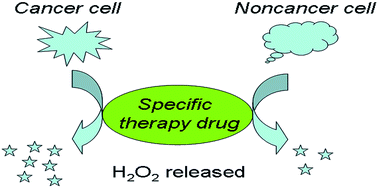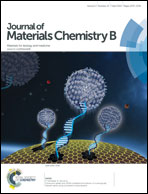rGO quantum dots/ZnO hybrid nanofibers fabricated using electrospun polymer templates and applications in drug screening involving an intracellular H2O2 sensor†
Abstract
Throughout the years, reported intracellular H2O2 sensors just focused on unrelated measurements of intracellular H2O2 generated from the stimulus of Cd2+, ascorbic acid (AA) etc., leading to difficulty in data interpretation. Here, a novel reduced graphene oxide quantum dots (rGO QDs)/ZnO hybrid nanofibers-based electrochemical biosensor for the detection of intracellular H2O2 released from cancer and normal cells under the stimuli of the corresponding anticancer drugs permits a quantitative study of the interaction between the target drug compound and the cancer cell, which is suitable for candidate drug screening. Nylon 6/6 nanofibers are used as robust templates for the facile fabrication of novel rGO QDs/ZnO hybrid nanofibers via electrospinning followed by a step hydrothermal growth method. The as-made sensor was applied to determine H2O2 released from a prostate cancer cell (PC-3) versus a noncancerous cell (BPH-1) under the stimuli of the corresponding anticancer drugs (apigenin, antisense CK2α etc.). The amount of H2O2 released from the PC-3 cancer cell is about (320 ± 12) amol per cell and about (210 ± 6) amol per cell for the BPH-1 noncancerous cell under the stimuli of specific therapy drug antisense CK2α. These results demonstrate that the rGO QDs/ZnO hybrid nanofibers-based electrochemical biosensor can efficiently detect the distinct amounts of H2O2 released from cancer and noncancer cells.


 Please wait while we load your content...
Please wait while we load your content...